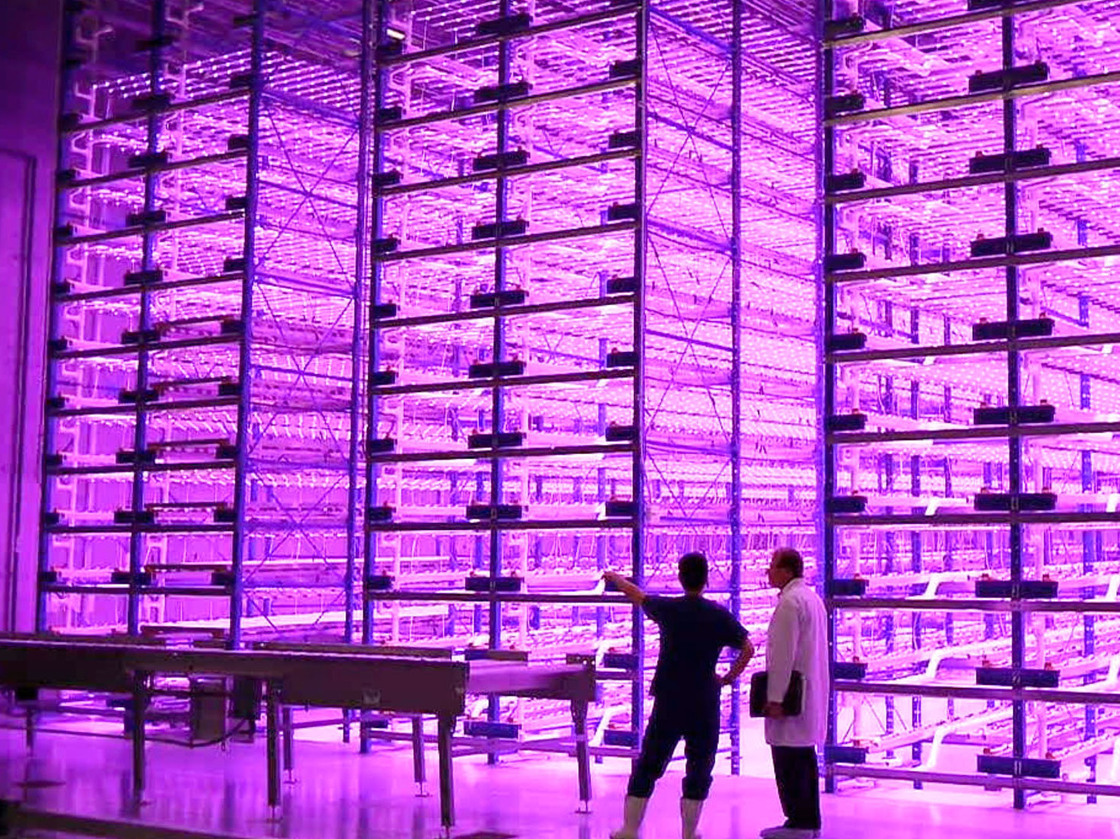
Caliber Biotherapeutics
Often, when we write about urban vertical farming, we post pictures of towers of happy-looking green plants. But the reality of vertical farming could be a little bit weirder and a little bit less natural-looking. It could be a little more pink.
Light is a major problem with vertical farming. When you stack plants on top of each other, the ones at the top shade the ones at the bottom. The only way to get around it is to add artificial light — which is expensive both financially and environmentally.
Vertical farmers can lower the energy bill, Mitchell says, by giving plants only the wavelengths of light they need the most: the blue and red.
Which, together, create a purplish-pinkish color that makes the whole farm kind of look like a Matrix-style energy harvesting station for My Little Ponies.
This isn’t just good for sci-fi lighting effects — it’s also practical. LEDs are more energy-efficient and give off much less heat than incandescents, so vertical farmers can put lights closer to the plants without freaking them out. One pink-light farmer told NPR that his plants grow 20 percent faster under these lights. It’s not the idyllic green space we’d like to imagine will take over our cities, but it might work.



